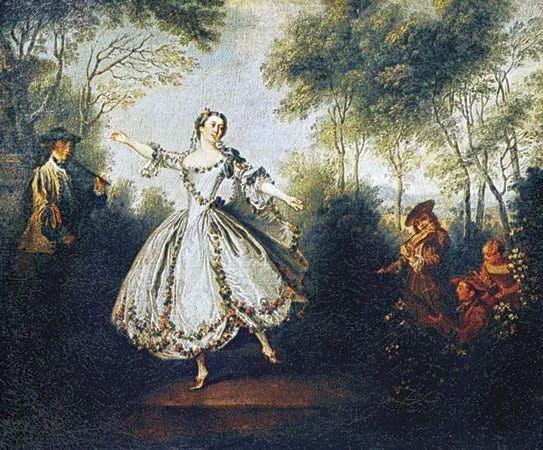Genre of the Day - Opéra-ballet 🇫🇷
Album of the Day - Pygmalion (Acte de ballet) by Jean-Philippe Rameau / La Petite Bande / Gustav Leonhardt (debuted 1748, recorded 1991)
The phenomenon of November in college has walloped me this week. Ah, November: after the rush of Halloween festivities subsides, the barrel race towards the finish mark of the semester accelerates. Everyone is locked away with their work. The sun crouches away a moment after it reaches its daily zenith. Making plans is like herding cats, and the stress mounts. I have 30 pages worth of writing to tackle by the beginning of December. But I remind myself that the work is always well worth it, and look back to history as an example: if people penned ambitious operas, dazzling ballets, I can confront my schoolwork. Sometimes, they even did both at once! Today’s genre takes us back to the opera for the second time within a week, the random genres matching my dramatics effectively.
The union of opera and ballet seems frankly too ambitious a fusion if there ever was one, as both require such meticulous dedication to form that somehow balancing both in a single production sounds like an undertaking, but for a time in Baroque music composers possessed the gumption. Ballet was still a relatively new form imported from Italy in the 1600s. The visionary composer Jean-Baptiste Lully was instrumental to its long-term establishment as head of France’s Royal Academy of Music. His efforts with ballet-master Pierre Beauchamp resulted in the ubiquitous five major feet positions, forms like the minuet, and the world’s first professional ballet company.
Upon his death, his legacy and contributions to French opera left large ballet flats to fill. Lully was inclined to tragedy—so much so that his shows constituted a genre called tragédies en musique. Successive contributors continued to blend ballet segments within their operas, even as they shifted gears from melancholia to novel, lighter themes, ahead of the opera buffa curve. They gave ballet a greater footing with opera throughout the shows, so just as much was expressed through the movement of the body as music. Opéra-ballet was structured with a prologue and 3-4 entrée acts, each accompanied by a divertissement ballet piece. Some contemporary observers chalked up these trends to a French impatience, the demand that a show stridently pack in both dancing and opera singing. It is a bit characteristic of the excesses the common folk would rail against in a rather revolutionary manner at the end of the century, one has to say. Thematically, the magical and fantastical tendencies of opera mingled with tales of far-off lands in the French imagination amidst colonialism’s acceleration in the late 17th century; opéra-ballet often, but not always, seized onto these themes.
A good opéra-ballet excited nobody more than Jean-Philippe Rameau, who wrote six of them as the era’s preeminent French opera composer. His first, Les Indes galantes, was an exoticist oddity incorporating vignettes of various romantic entanglements between colonial figures and local peoples. Off-putting today, but perhaps thought-provoking to viewers at the time to take in stories of relationships between Europeans and the people their empires were colonizing. A cursory listen to a few of the songs confused me, as Rameau doesn’t actually attempt to evoke other places musically.
I’ve covered a later iteration of exotica in this column already, so I threw in the towel and decided instead to opt for Pygmalion, his richly harmonic and mythological masterpiece produced in a span of only eight days. It tells the story of the sculptor Pygmalion falling out of love with his girlfriend, enamored instead with the statue he’s producing, brought to life with a wish to Venus. It’s a treatise on the beauty of falling in love with your craft; in the end, Cupid makes arrangements for the sculpture-brought-to-life and Pygmalion as well as his ex to be in happy relationships.
His complex harmonies, controversial at the time, stand out; the instruments in the overture sound like gleeful spectators, the harpsichord, horns, and strings grinning in staccato anticipation. The cutting clarity of this recording’s haute-contre tenor captures the sculptor’s longing with winning pathos. There’s a slow and gradual build to the tambourine and flute pirouettes in Act 4, rejoicing the happy conclusion to the drama in a chaconne, a Baroque triple-time conclusion piece built on a bass phrase. Though the work’s movement jumps out purely musically, ballet is a visual spectacle I don’t have quite as much vocabulary to cover. This excellent (if bare bones besides the intricate costume work–everyone deserves a Rococo court budget!) performance by the Stony Brook Opera might give you similar tunnel vision to the titular artist in its spectacular rendition.





